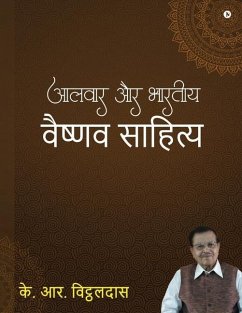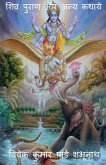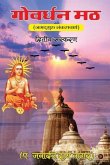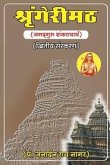The author has proved that 'Nalayira Divya Prabandham' worked as a basic scripture for the formation of Indian Vaishnavite literature. He has moulded the book in the form of an encyclopedia of Bhakti (devotion). 16 chapters of this book deal with the Rama and Krishna kavyas composed in the vernaculars of India such as Tamil, Saurashtri, Kannada, Telugu, Marathi, Gujarati, Hindi, Punjabi, Assamese, Bengali and Odia. The author has described in detail the history of the direct and indirect impact of the hymns of Alwars on the Indian Vaishnavite literature. He has proved that the basic doctrines of philosophy, devotion and methods of worship, etc. had spread throughout India from Tamil Nadu only. The Vaishnavite Bhakti Movement initiated by the Alwars enriched the Indian Rama and Krishna kavyas and brought unity in diversity in the devotional thoughts of Indian Bhakta poets who were born after the period of Alwars. The Ramayana epic of Adikavi Valmiki is the basic scripture for the formation of Indian Rama kavyas. All the Ramabhakta poets have composed their Rama kavyas by making few alterations in the Ramayana story of Valmiki according to the need and social circumstances of their time. Valmiki's Ramayana has influenced the Indian people generation after generation and is continuing to do so. This stout book has been written in simple Hindi with an attractive lead, informative body and a telling conclusion and reveals the hard industry and widespread knowledge of the author. The oneness and similarity found in the creations of the Bhakta poets reveal that the atma of the Indian Vaishnavite literature is one and the same. Chapter 7 deals with Sourashtri Vaishnavite literature of Tamil Nadu.
Hinweis: Dieser Artikel kann nur an eine deutsche Lieferadresse ausgeliefert werden.
Hinweis: Dieser Artikel kann nur an eine deutsche Lieferadresse ausgeliefert werden.








